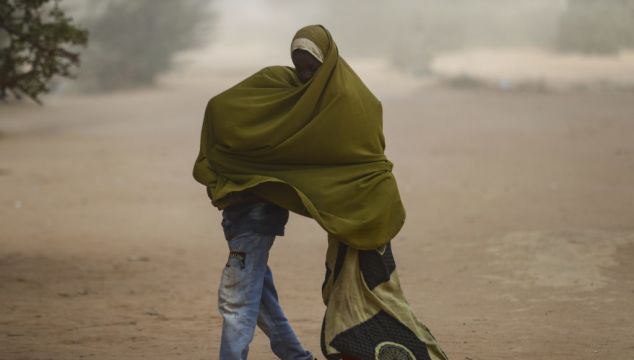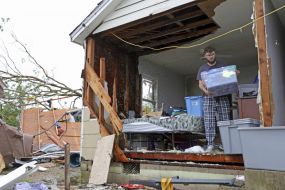El Nino is pushing certain parts of the world into “uncharted territory”, exacerbating threats to human health from climate change, scientists have said.
Every few years, temperatures in the tropical Pacific Ocean go through hotter or cooler phases in a cycle known as the El Nino southern oscillation.
It affects weather and climate across the world, most notably in the tropics, and it therefore can have a severe impact on people’s health.
Scientists recently identified El Nino as having begun its latest phase earlier this year, after three years of its cooler counterpart, La Nina.
The swings between El Niño and La Niña have been bigger in recent decades than earlier ones. Our guest blogger at the ENSO Blog covers new research pointing the finger at human-caused climate change.https://t.co/KwZnsoRsFS pic.twitter.com/Y4KwqYediz
Advertisement— NOAA Climate.gov (@NOAAClimate) July 27, 2023
The World Meteorological Organisation (WMO) predicts that this is likely to temporarily push the global average temperature beyond the 1.5 degrees marked as a climate boundary in the Paris Agreement.
During El Nino, parts of Sub-Saharan and southern Africa, India, Australia, Indonesia and the Amazon typically become drier, which can limit the amount of food harvested in these regions.
Other areas like parts of Patagonia, the southern United States, central Asia, east Africa and parts of China and Japan get wetter.
India is already preparing for a smaller rice harvest than usual because of El Nino, Dr Walter Baethgen of Columbia University’s Climate School said, and if there is less food produced globally it can push up prices, hurting those countries most vulnerable.
Higher global temperatures can also lead to an increase in heatwaves and spread of disease to new areas.
Professor Chris Hewitt, director of climate services at the WMO, said areas that are predicted to get warmer with El Nino, the tropics, face the greatest risk, adding: “We’re entering uncharted territory here.
“That is the point of trying to limit global warming to below 2 degrees and ideally below 1.5 degrees and if we’re honest, as low as possible.”
Professor Gregory Wellenius of the Boston University School of Public Health said heatwaves, which are expected to increase in frequency and intensity with every increment of global warming, kill more than any other type of severe weather.
It is estimated that there are half a million deaths every year around the world because of heat.
July 2023 was the hottest month ever recorded.
🔗 https://t.co/O09yphDLRl
🗣️ #EarlyWarningsForAll #StateOfClimate
📷 @CopernicusEU pic.twitter.com/QZoWvj5mgC— World Meteorological Organization (@WMO) August 9, 2023
Not only do the added temperatures attack people directly through dehydration, heat stroke and by exacerbating pre-existing illnesses, they also have indirect effects such as slowing down health service response times, disrupting power or water services and spreading disease.
Dr Madeleine Thomson, head of climate impacts and adaptation at Wellcome, said higher temperatures brought on by El Nino are allowing malaria to spread further into the traditionally cooler regions of the east African highlands.
It is becoming more prevalent over the long term with sharp outbreaks clearly aligning with El Nino periods.
She said: “North-western Ethiopia tends to, historically whenever there’s an El Nino, go into drought, but what also happens is that you get warming.
“Ethiopia is a mountainous country. People who live at high altitude are not normally exposed to malaria because it’s basically too cool for transmission.
“We’ve seen from historical data that when you have an El Nino, you tend to get an increase in transmission in areas in the highlands where the populations are not immune, so they’re at risk.”







